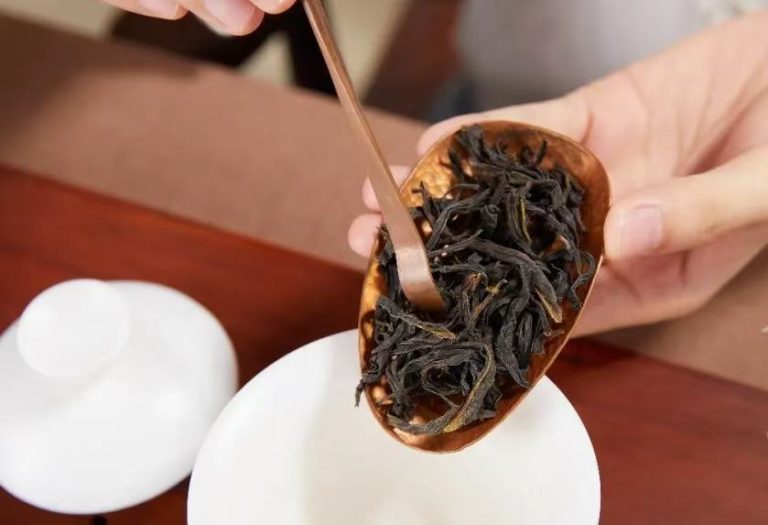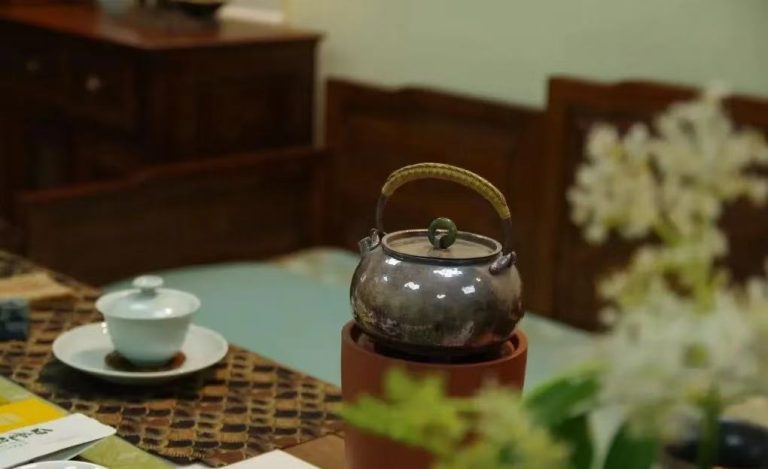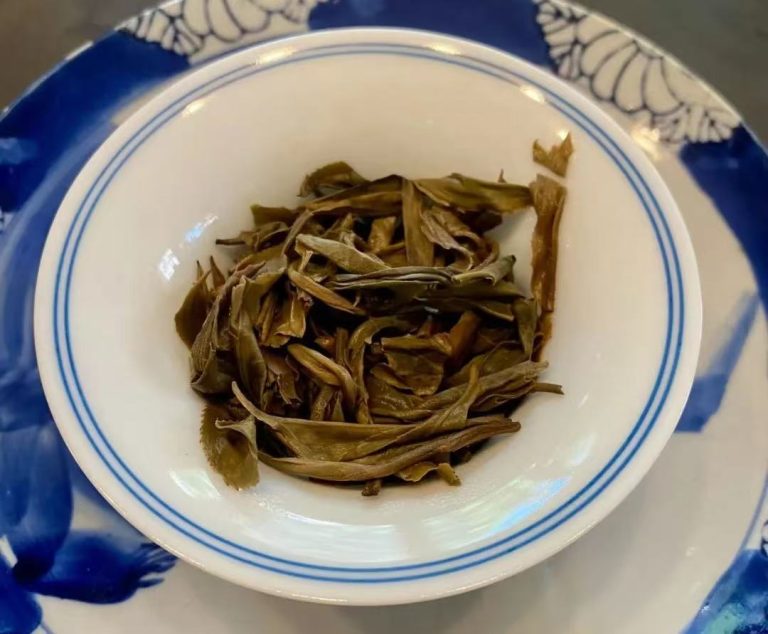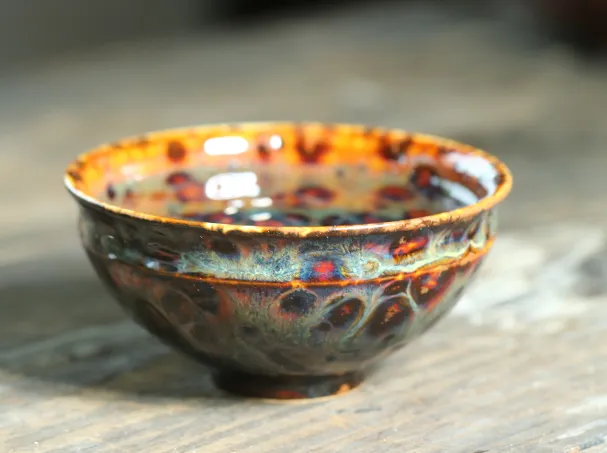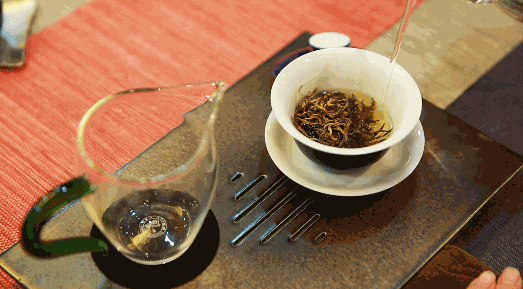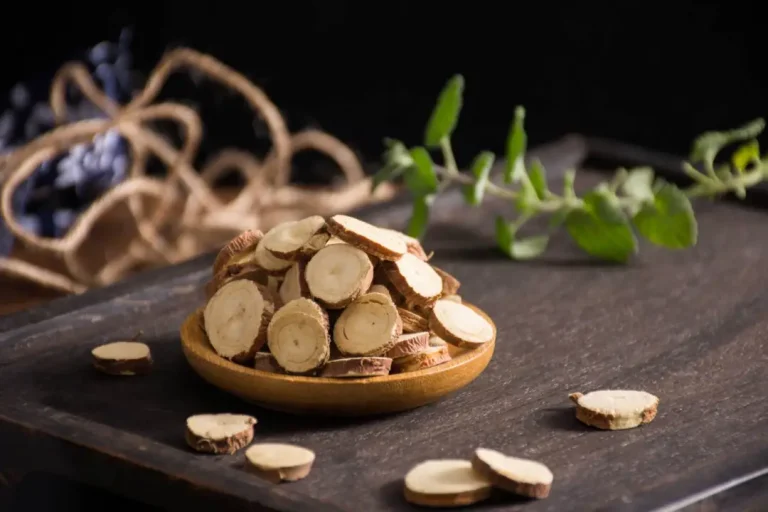Historically, it is also rumored that Shennong tasted a hundred herbs and encountered seventy-two poisons in a day, and was relieved by tea.
1. Tea as Traditional Chinese Medicine
In ancient times, tea is medicine, and was recorded in medical books.
In the “Shennong Materia Medica” is recorded “Shennong tasted all kinds of grass, the day encountered seventy-two poisons, get tea and solve.” Visible, the origin of tea should be used as medicine. In the custom of drinking tea has just formed in the era of the Wei Jin and North and South Dynasties, tea-making technology is not simple, childish, reflecting the tea-making technology in the tea has become a hobby drink before the full development of this development is completed in the field of medicine.
From the time when tea became a hobby beverage, the processing of tea to make it more flavorful while maintaining its biological characteristics became the most popular goal of tea-making technology at this stage. Tea took a different path in the world of hobby beverages, and although conceptually it parted ways with medicine, technologically it has not changed fundamentally.
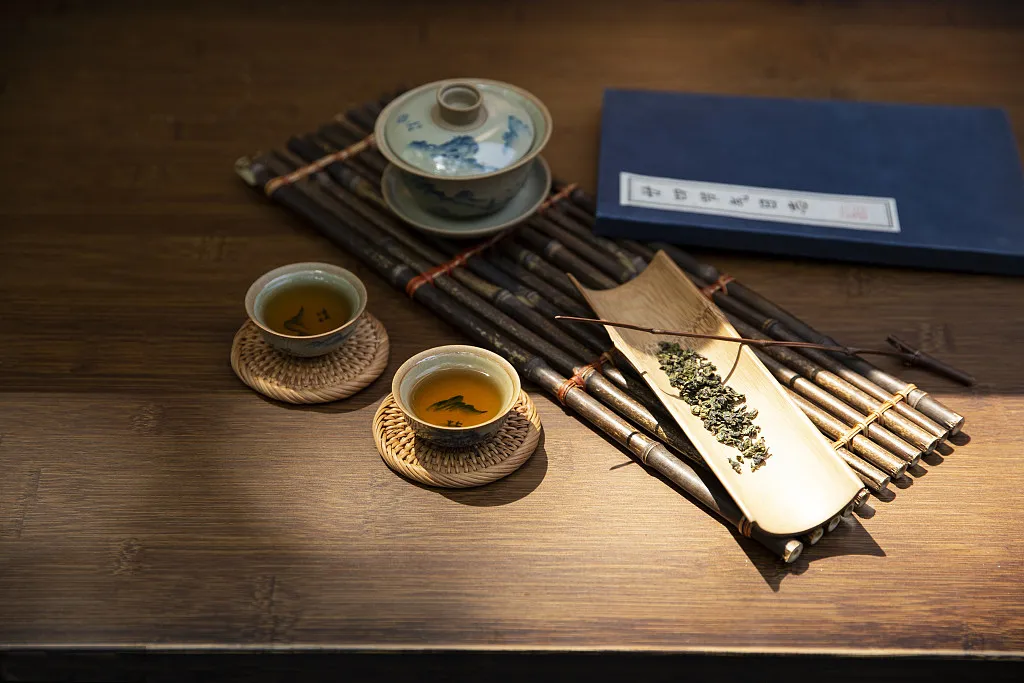
2.Traditional Chinese Medicine Benefits of Tea
Since the Han Dynasty, many historical books and ancient medical books have recorded a lot of medicinal value of tea and drinking tea fitness discourse. According to incomplete statistics, China has 16 kinds of ancient medical books recorded tea health effects of 20, 219 kinds of medicinal effects, such as refreshing and bright eyes, quenching thirst and curing dysentery, go greasy to wake up and so on.
The Divine Husbandman’s Classic of the Materia Medica: “Tea has a bitter flavor; drinking it makes one benefit from four, lie less, lighten the body, and brighten the eyes.”
The Divine Husbandman’s Book of Foods says, “Tea and tea taken over a long period of time is powerful and pleasing to the mind.”
According to Guangya, “Tea is picked between Jingba and made into cakes, and it is drunk to wake up and make people sleepless.”
Lu Yu “tea scripture” said: “tea for use, taste to cold, for drinking the most appropriate, fine line of frugal virtue, if the hot and thirsty stagnation, brain pain, eye astigmatism, limb annoyance, hundreds of joints are not comfortable, chatting four or five sips, and the nectar and manna of Daigo to fight against also.”
Newly Revised Materia Medica – Wood Department” said: “Ming, bitter tea, taste sweet and bitter, slightly cold and non-toxic, the main fistula, facilitate urination, to remove phlegm and hot thirst, people less sleep, spring picking. Bitter tea, the main downward gas, small food.” It is also known as “lowering the gas to eliminate food, as a drink, plus cornelian cherry, onion, ginger good.”
The Southern Song Dynasty Yu Zai “Ancient and Modern Hapi Matters outside the collection” recorded: “Tea has a headache, drink food, so that sleeplessness” of the efficacy.”
Li Shizhen, “Compendium of Materia Medica”: “Tea bitter and cold, the most able to lower the fire and both alcohol and food poison, so that people loosen the mind, not faint and not sleep, this tea is also.”
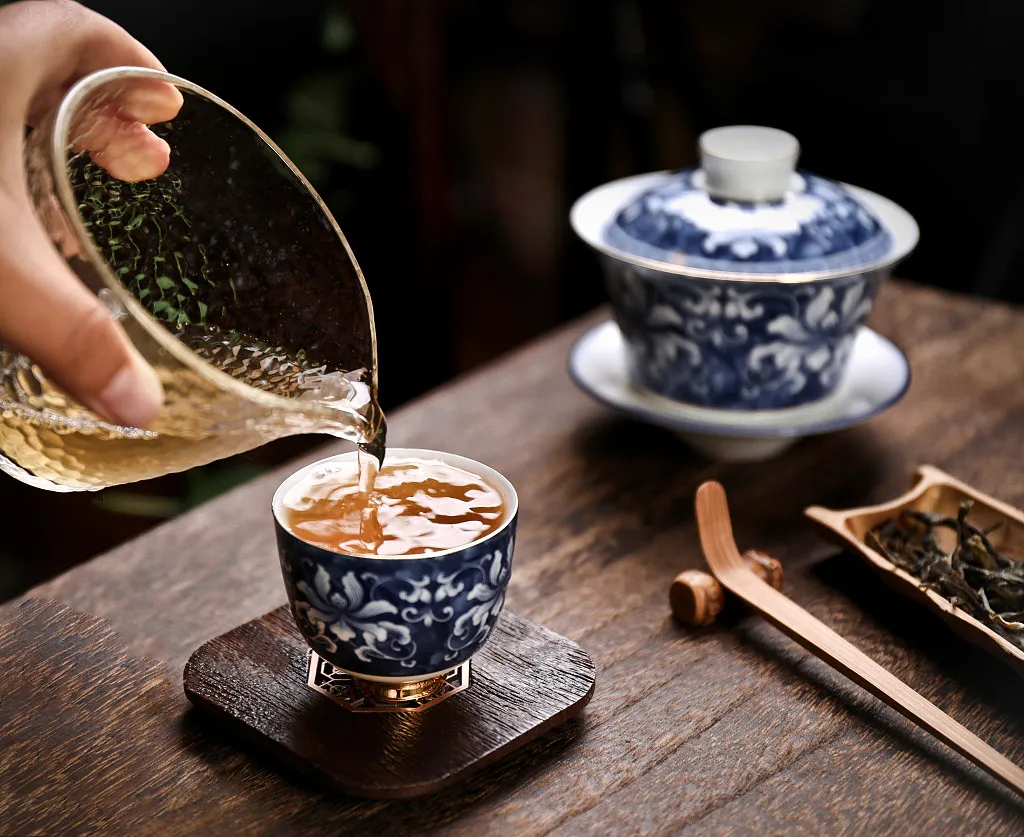
3.Tea and the Five Elements
Ancient doctrine of the five elements that all kinds of substances in the universe can be categorized according to the attributes of the five elements, if the natural world of various things, phenomena, nature and role, and the characteristics of the five elements after analogy, can be attributed to the five elements.
The first sentence of the opening of the “Tea Classic” said that tea is China’s “South” of the “Jia Mu”, of course, the tea first of all belongs to the wood. Lu Yu and the “five elements” into the “pan-fried tea” tea ceremony, he believes that the combination of gold, wood, water, fire and earth in order to cook a good tea. Decoction of tea with the wind stove, is gold; furnace standing on the drawing board, is earth; furnace boiling water, is water; furnace under the charcoal, is wood; carbon fire, is fire. These five elements are mutually reinforcing, yin and yang harmonization, so as to achieve the tea “get rid of a hundred diseases,” the purpose of health.
Modern tea-making process, picking under the tea green (wood), by hot iron pot (gold) “kill”, kneading slow fire (fire) baked into dry tea. The “gold” is used to restrain the “wood”, and then the “fire” is used to restrain the “wood”, changing the nature of the tea, so that it can be made into a finished tea. The boiling water (water) and tea utensils (earth) needed to brew tea are also part of the Five Elements.
Chinese medicine believes that a person’s balance of the five elements to stop uniformly, the proper birth of grams, you can be strong body healthy, destiny. Tea after repeated births and grams, attack and attack, combined and take, compatible with the essence of the five elements of yin and yang aura, which is the root of the many health benefits of tea.
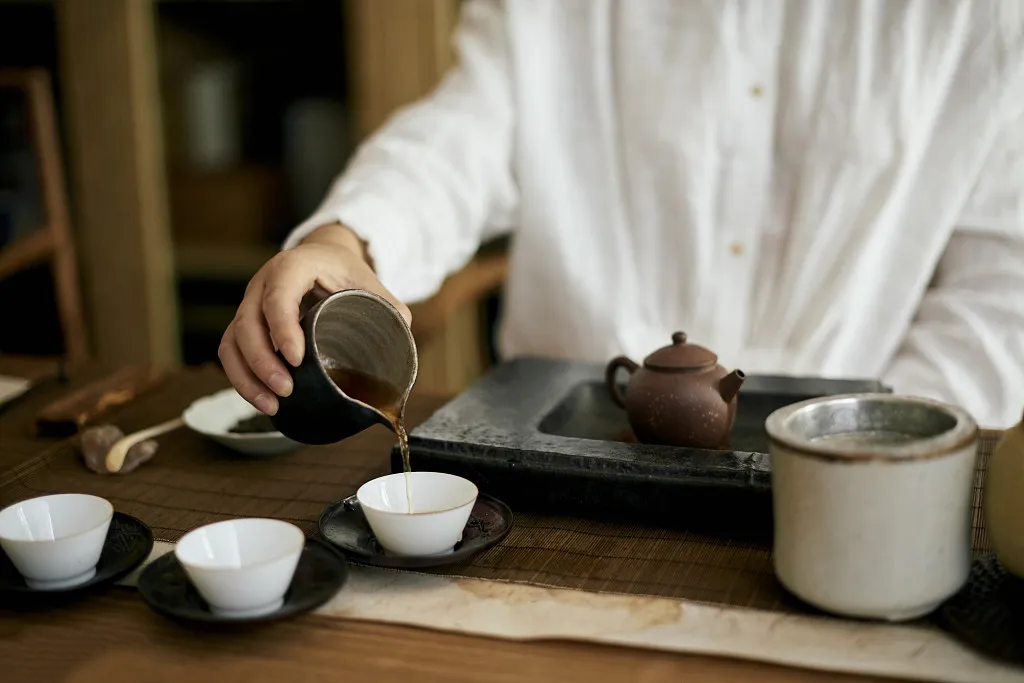
4.The History of Chinese Medicine Tea Therapy
Chen Zangqi in the Tang Dynasty, “Gleanings from the Materia Medica” in the “tea for all diseases of the medicine”. Su Jing and other writers, “Newly Revised Materia Medica” will be listed in the wood products, its taste sweet, bitter, cold, non-toxic, and its efficacy has the next gas, phlegm, heat, thirst, people sleep less, elimination of food, urination, treatment of fistulas and so on. Later generations of doctors are adhering to its theory, and constantly develop the medicinal properties of tea.
Lu Yu is a collection of previous literature on tea, the great success of the preparation of the “Tea Classic” book, this book is not only rich in content to carry forward and back, and laid the tea in the entire history of China’s important position, so that people have a medicinal knowledge of tea at the same time, but also recognize that the tea has become a part of the genes of the Chinese culture.
Fei Wen “tea” cloud “its nature of the essence of clear, its flavor Haojie, its use to clean up the trouble, its work to and. Reference to a hundred products and not mixed, the more people drink and only high” and Lu Tong’s “seven bowls of tea” “a bowl of throat kissing moist, two bowls to break the loneliness. The three bowls of tea are so dry that there are only five thousand scrolls of words. In the fourth bowl, I sweated lightly, and all the unfair things in my life were dispersed to my pores. Five bowls can not be eaten, only feel the two armpits Xi Xi Qing Feng Sheng …… “, the efficacy of tea to the abstract spiritual enlightenment, for the tea health significance to make a positive affirmation.
There are many Tang poems to eulogize the contribution of tea, such as Li Bai’s “Root Ke sprinkled fragrant Jin, picking service Run muscle and bone,” Yan Zhenqing’s “Liu Hua net muscle and bone, sparse cleansing source of the heart,” Lv Yan’s “Increase the strain of clear gas into the skin! “Tea has the effect of removing oil and moisturizing and cleaning the muscles and bones: Cao Ye Yun “six bowels of the sleep God to go, a few poetic thoughts clear” Qiji poetry “taste out of the poetry demon chaos, incense search sleep thoughts clear”, indicating that the tea can condense the mind in addition to sleep, so that people can think fast; poet monk Kyauk Ran’s “Drinking Tea Song” not only explains that tea can dispel loneliness, mindfulness, but also allows people to change their bones and become immortal products.
To the rapid development of the tea industry in the Song Dynasty, the use of Chinese medicine tea therapy and the use of the scope of the gradual expansion, such as the “Taiping Huimin and the Bureau of prescription” that is listed in the medicinal tea special chapter. One of the acacia buds tea party, on the Luo leaf tea party, saponaria buds tea party, heather buds tea party is no longer focused on the herbal efficacy of tea research, but the focus shifted to the production process of tea and serving methods in the formula, which makes the Chinese medicine tea therapy in the development of a new step forward. At the same time, with the Tang and Song dynasties social civilization is highly developed, a variety of thinking will be integrated to Confucianism, Buddhism, Taoism and tea produced by the combination of tea culture came into being tea culture in the formation, development process, and Chinese medicine and the theory and practice of health constitute a benign interaction, after the precipitation of the years, the establishment of a tea-centric tea health methods.
To the Ming and Qing dynasties, Li Shizhen in the “Compendium of Materia Medica” in a systematic summary of tea, pointing out that “tea is bitter and cold, yin in the yin, sinking is also, also descending, the most able to lower the fire. Fire for all diseases, fire drop is clear. However, there are five fire, fire has virtual reality. If the young and strong stomach healthy people, heart, lungs, spleen and stomach fire more than abundant, so with the tea is appropriate. Warm drink is the fire due to cold gas and down, hot drink tea by fire gas and ascending dispersion, but also to solve the poison of wine and food, so that the person Shen Si Shuang, do not faint and do not sleep, the work of this tea is also …… “in its text with tea prescriptions 16, does not contain tea,” tea, “Tea Drinks “10, are one by one detailed evidence records.
After this, not only a large number of effective tea therapy formulas have been introduced and popularized, but also clinicians pay more attention to the production of the art of serving and drinking in the clinical use.
For example: tea therapy formulations by the original soup, pills, the development of soup, pills, powder, punch, tea drink and so on; application methods developed into drinking, serving, and serving, serving, taking in, gargling, drops, dressing, paste, rub, paint, smoke and so on. In the “Cixi Guangxu medical prescription” has a large number of examples of records, it can be seen at the time of Chinese medicine tea therapy prevalent in the world.
Tea people in the writings of tea therapy talk about a lot of people, the most representative of the “Zunsheng eight paper” in the “tea spring class” chapter, focusing on the knowledge of tea, tea picking, tea and other tea activities that can bring people a close to the natural state of health. Shou Shi Qing Zhi” described in the “twelve hours without disease method” is to emphasize the importance of tea in health care. This kind of health-oriented Chinese tea therapy focuses on cultural expression, is close to daily life, and is naturally integrated into society.
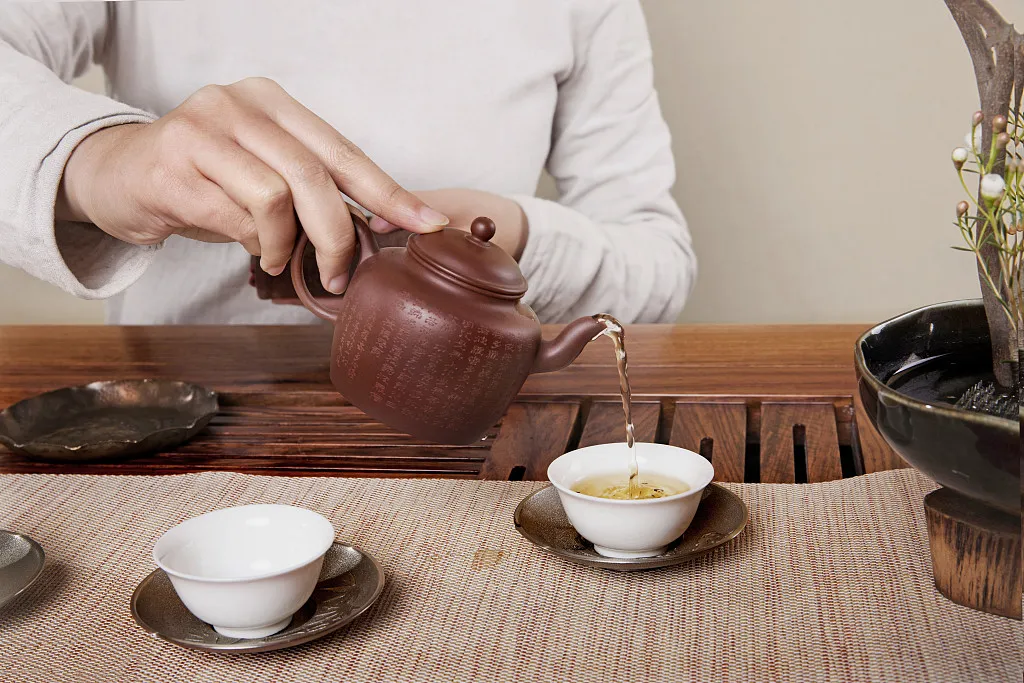
5.History of Innovation in Chinese Tea Therapy
Since the late 20th century, due to the comprehensive introduction of Western culture and thought into China, traditional Chinese culture has suffered a strong impact accordingly, and Chinese medicine has also experienced a conceptual renewal process from the gradual change from the confluence of East and West to the combination of East and West.
Chinese medicine tea therapy in this context, stepped into a new period of innovation. Under the active promotion of new scientific experimental methods such as pharmacology and biochemistry, people have a more in-depth understanding of the medicinal components of tea and its efficacy. Research has found that tea contains more than 450 kinds of chemical components, including tea polyphenols, alkaloids, tea polysaccharides, tea pigments, vitamins, amino acids, minerals and other elements as the main components.
This new perspective to the Chinese medicine tea therapy has brought a new way of treatment, with the continuous progress of the refining technology of traditional Chinese medicine, the effective components made of capsules of health products has become a popular commodity.
People are designing tea bags, instant tea, concentrated tea and canned tea and other more simple way of drinking tea makes people more and more willing to accept this innovative Chinese medicine tea therapy.
